Growing Up in a Car Guy Family
By Bruce Troxell
Posted by permission.
I am a second-generation car guy primarily because of my father’s influence. I learned the unwritten rules of how to be a car guy by hanging out with my father and tagging along with him and his car guy buddies to car events. My father never did heavy mechanical work on cars, but he was in inveterate tinkerer, doing routine maintenance and fixing the little things that went wrong. And as a teenager in the 1920s, he learned a lot about a great variety of cars. I discovered that if you keep your eyes and ears open, and hang around with people who talk about cars a lot, you can learn enough to become a genuine car guy. Below are a few things I remember about my father and his cars, along with a few of my car guy tales.
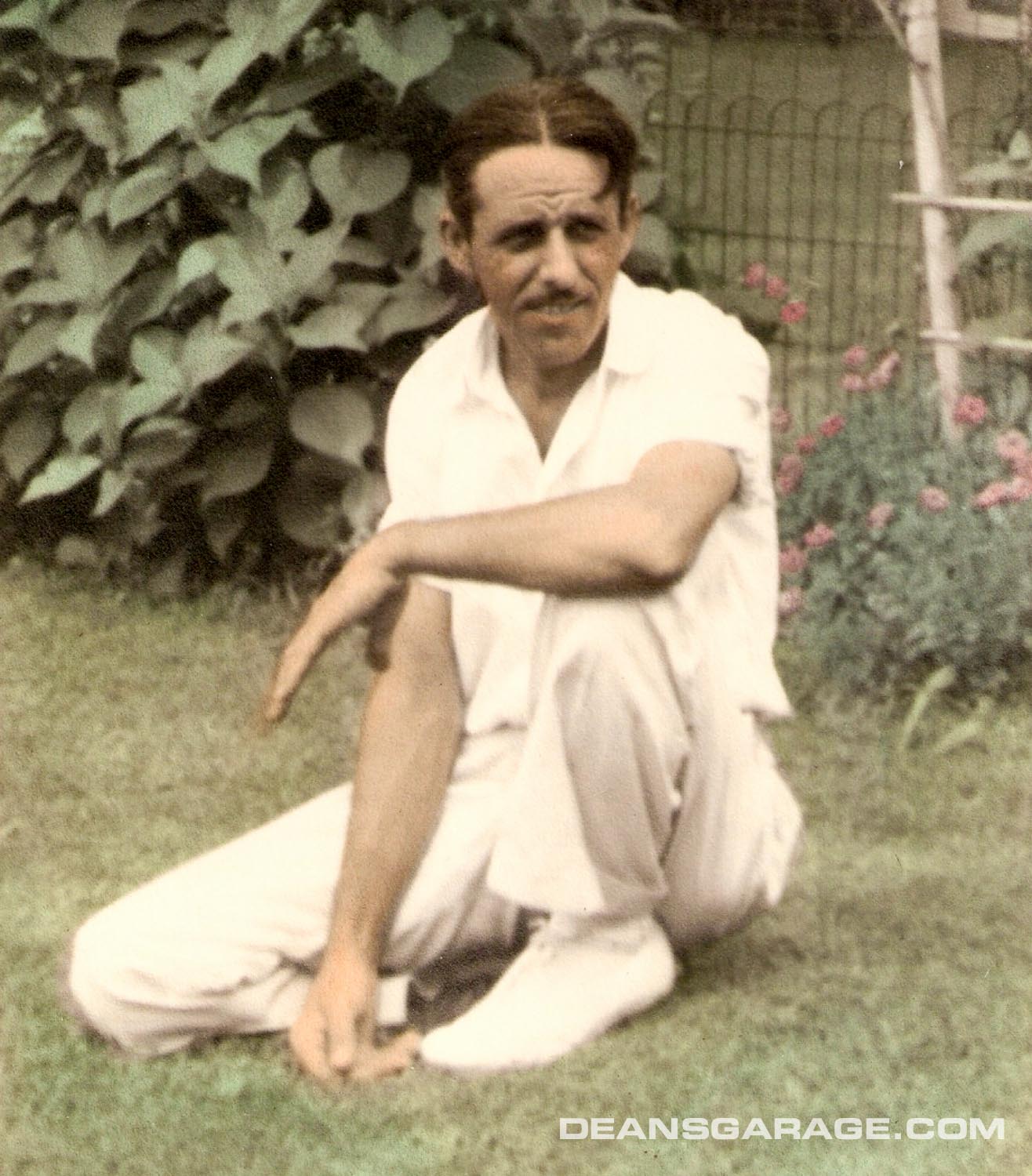
A Brief Biography of Harold Troxell
My father, Harold, was born in 1911, the second-youngest of five children of Rutherford and Eva Troxell in small-town Burlington N.J. He was one of the thousands upon thousands of Americans whose lives were shaped by catastrophic world-wide events far beyond their control—the Spanish flu pandemic of 1918; the Great Depression; and World War II. The Spanish flu took Rutherford’s life when my father was eight years old and the Great Depression turned what should have been his prime earning years into a daily struggle. Yet he never quit—he did whatever he could do to make ends meet.
At the beginning of World War II, he got a job at Glenn L. Martin Aircraft in Baltimore Maryland making B-26 Marauders. For several years he lived in Baltimore during the week and drove his 1940 Plymouth back to New Jersey on weekends at a time when interstate highways were years in the future. He found a job in in another aircraft factory in Pennsylvania shortly before WW II ended so he could actually live at home. The U.S. Navy took over that facility after the aircraft company went out of business and he signed on as a Navy civilian employee, retiring in 1974 after a 30-year career as an aeronautical technician.
Life Status Measured by Cars
It was Alfred Sloan, General Motors’ president and CEO between 1921 and 1956, who devised a product strategy targeted at buyers’ specific aspirations by dividing the market into price segments and offering cars with the most appeal and value in each segment—he called it “A car for every purse and purpose”. Each GM car was to have a distinct identity and price to appeal to distinct levels of buyers. As buyers’ purchasing power increased, GM would keep them as customers by offering what they wanted on the next rung of the price ladder.
Sloan’s price ladder strategy was so successful it was adopted by other large-scale auto manufacturers. In Chrysler’s ladder, the low-price Plymouth was the first rung, with Dodge, DeSoto, Chrysler and Imperial as following rungs. Sloan’s strategy was brilliant and we can trace a large part of my father’s life and his successes by looking back at the cars he owned. For many years, my father was stuck on the low-priced Plymouth rung of the ladder, but through hard work and perseverance, he managed to eventually move up the ladder into a top tier Chrysler New Yorker.
Car Guy Tale #1 – Squeaks and Rattles
Just about every new car in the fifties had squeaks, rattles, and wind noise even when the windows were closed. They weren’t serious problems, but if you were a car guy, they drove you nuts! And it took a pair of car guys to find the source of the irritation—one to drive, while the other in the passenger seat contorted his body into indescribable positions to reach and look under the dash, or move his head around to locate the wind noise source. In my father’s case, it was usually him and his model airplane buddy and fellow car guy, Ray. According to unwritten car guy law, whichever car they were analyzing, the guest drove and the owner played contortionist. I, being only a ‘future car guy’ got into the back and looked over the front seat to see what was going on. Advice from a ‘future car guy’ was given only if requested. The driver would seek out rough roads if they were looking for squeaks or rattles, or drive at a certain speed, previously ascertained by the owner, if it was a wind noise problem. It was a basic lesson in becoming a car guy.
My Father’s Cars
When my father was in his mid-eighties, I discovered the key to unlocking his car guy memory banks. After racking my brain for a meaningful Christmas gift, I gave him a photo album filled not with pictures, but with original dealer’s brochures for every car he ever owned. I think it became his favorite gift of all time and whenever we would later visit, the album would be somewhere near his favorite chair. The car pictures in this article and the quotes below are taken from those brochures.
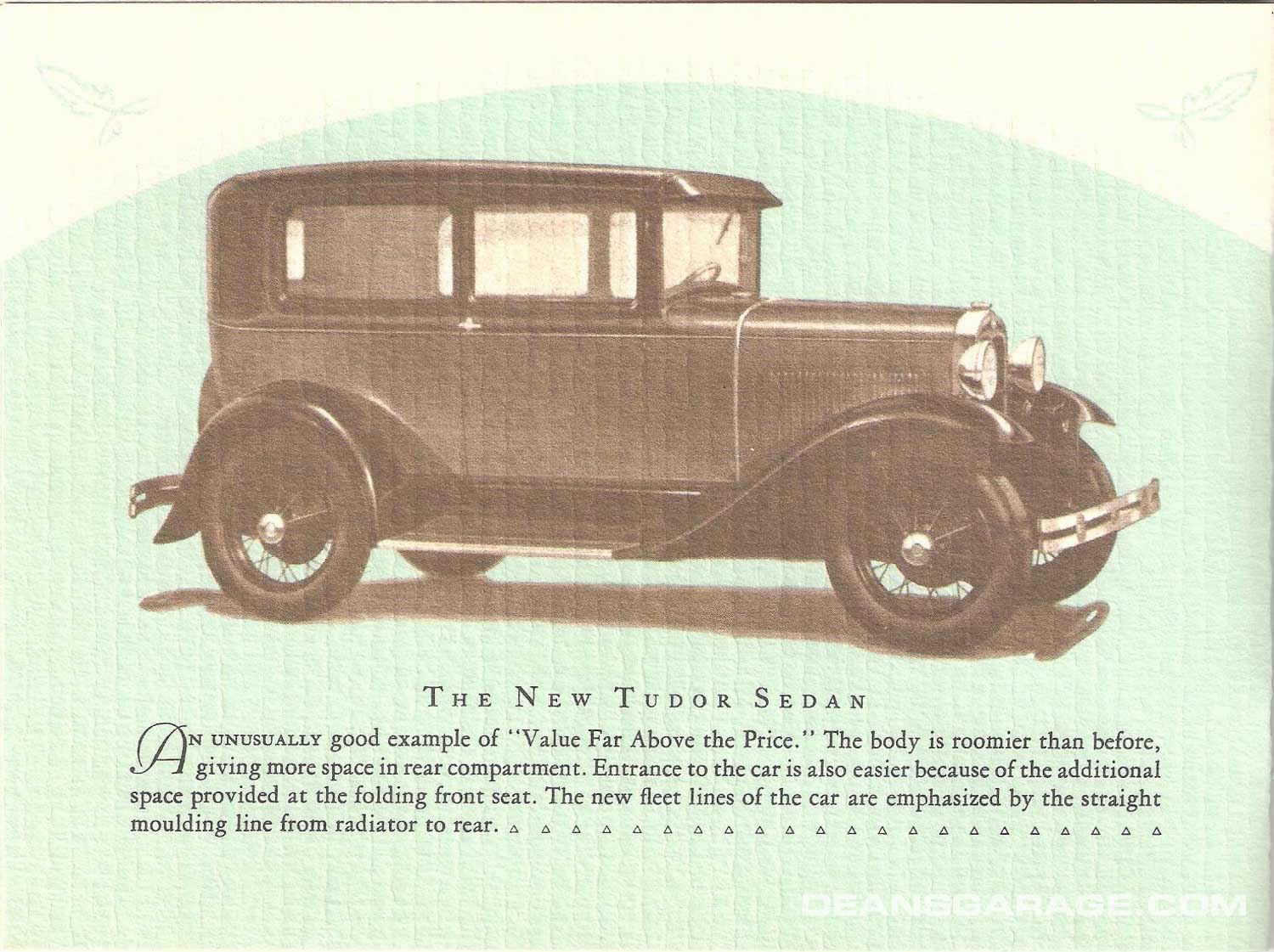
1930 Model A Ford
During the depression years when times were tough, my father managed to buy his first car, a used 1930 Model A Ford. The Ford brochure let everyone know that “All have the radiator shell, hub caps, headlamps, cowl finish strip, and other exterior metal parts fashioned of rustless steel of enduring brightness.” Even during the hard times, my father took pride in what he drove and he painted the wire wheels a cream color to contrast with the black body.
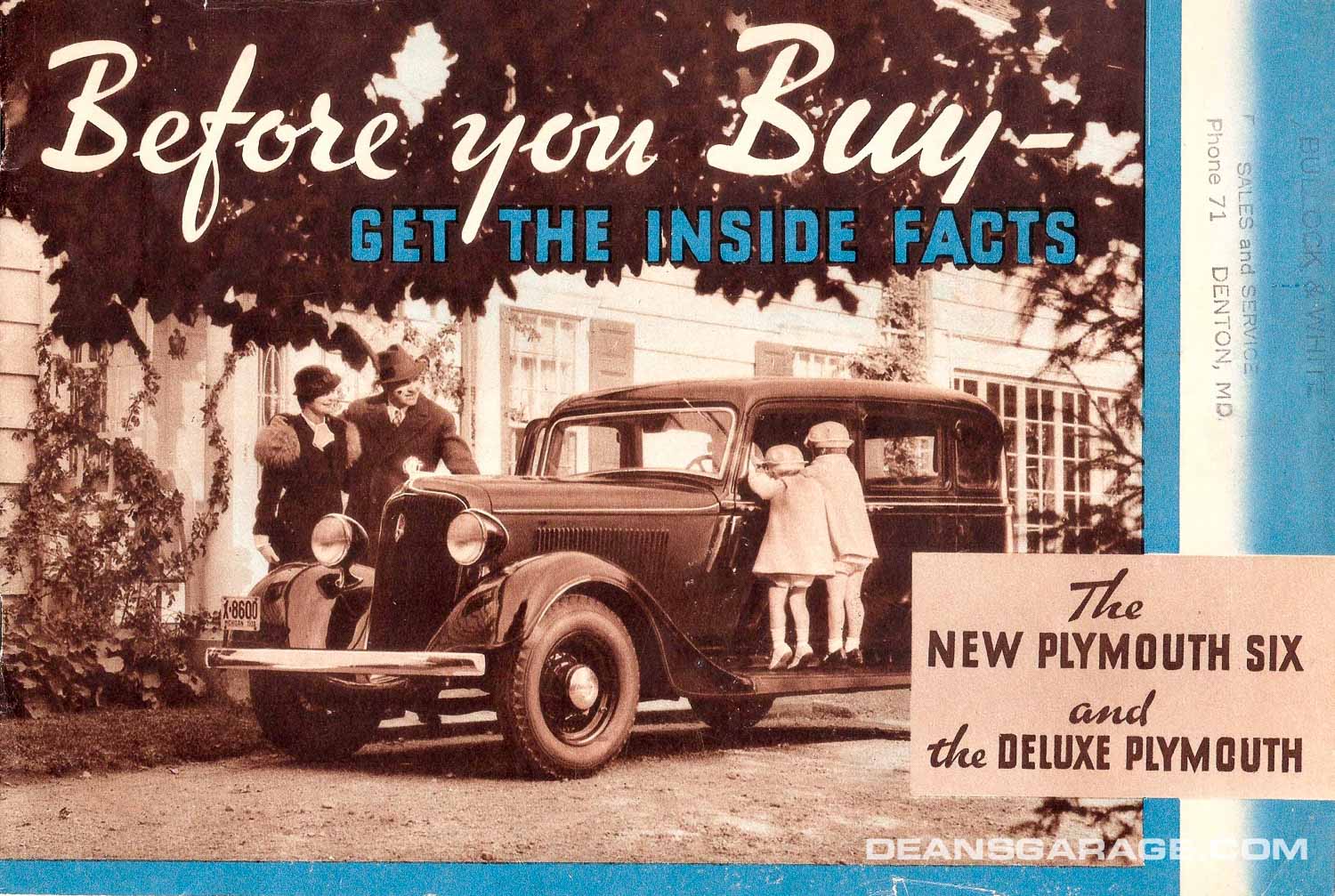
1934 Plymouth
His second car was another used car, but this time a Plymouth. It was a good choice—for 1934 the low-priced Plymouth did, indeed, have a leg up on the competition. It had several engineering features the competition didn’t have, including Chrysler’s patented ‘Floating Power’ engine mounts, and it was still the only car in the low-priced field with hydraulic-actuated brakes. The Plymouth brochure touted the “New reasons to change to Plymouth.” My father was so impressed with this car, that he remained a loyal Plymouth and Chrysler man for the rest of his life.
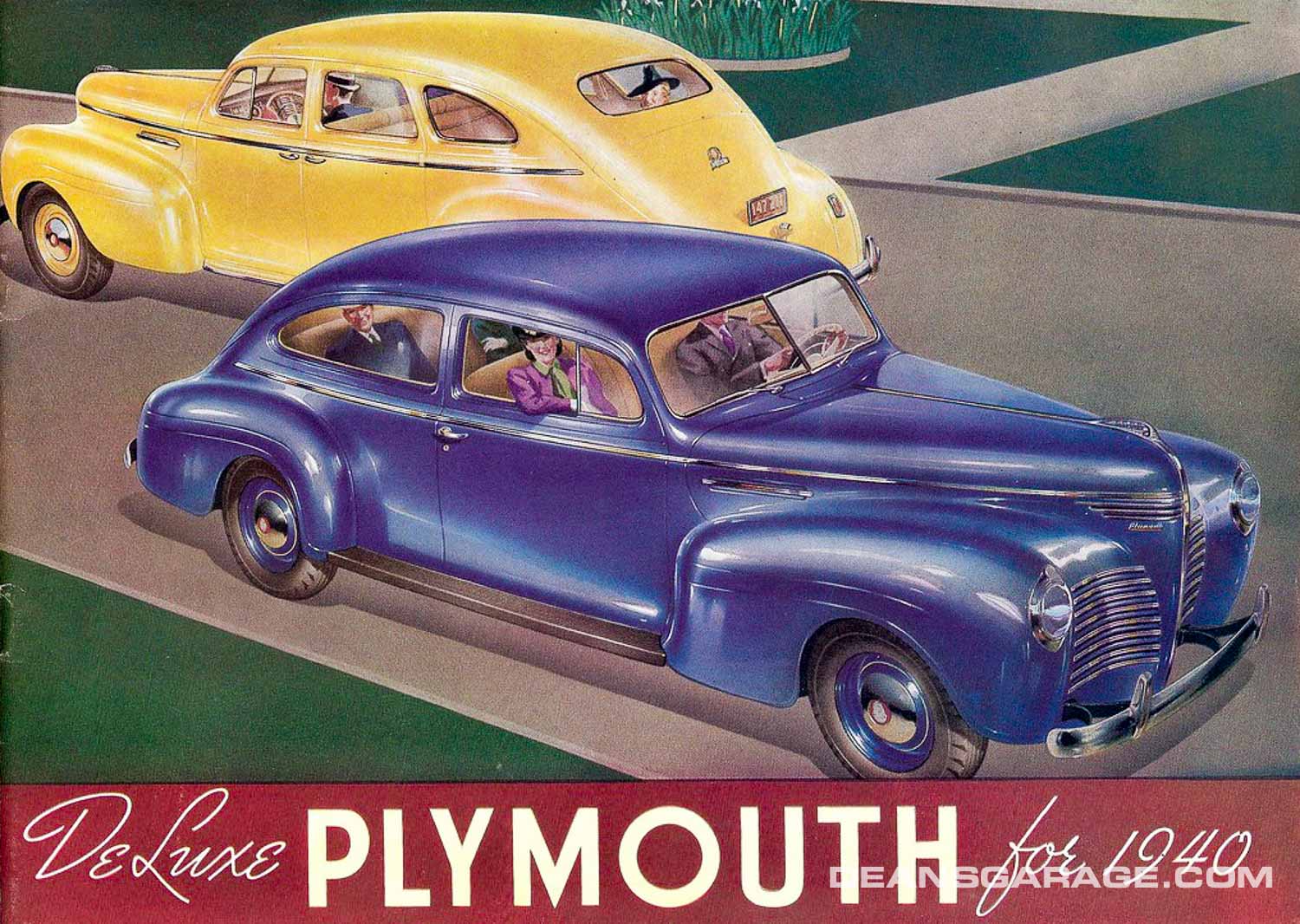
1940 Plymouth
Another second-hand four-door Plymouth. This is the car he drove back and forth between Baltimore and South Jersey while he worked at Martin Aircraft. Despite the great number of miles he put on the car, he never mentioned that he ever had a problem with it. The brochure boasted that “Running boards are optional at no difference in cost.” Another great triumph of automotive engineering technology!

1946 Plymouth Special DeLuxe
With steady employment during WW II, my father was ready for his first new car when the war ended. He stayed loyal to Plymouth and bought a new gray 1946 four-door Special DeLuxe sedan. This was the first year that Chrysler returned to making cars following their changeover to war materiel in 1942 and their brochure made sure you knew these cars were “Four years better than before”, although probably nothing was new except for a few trim pieces. This is the first car I remember and many miles were spent riding in the back seat.
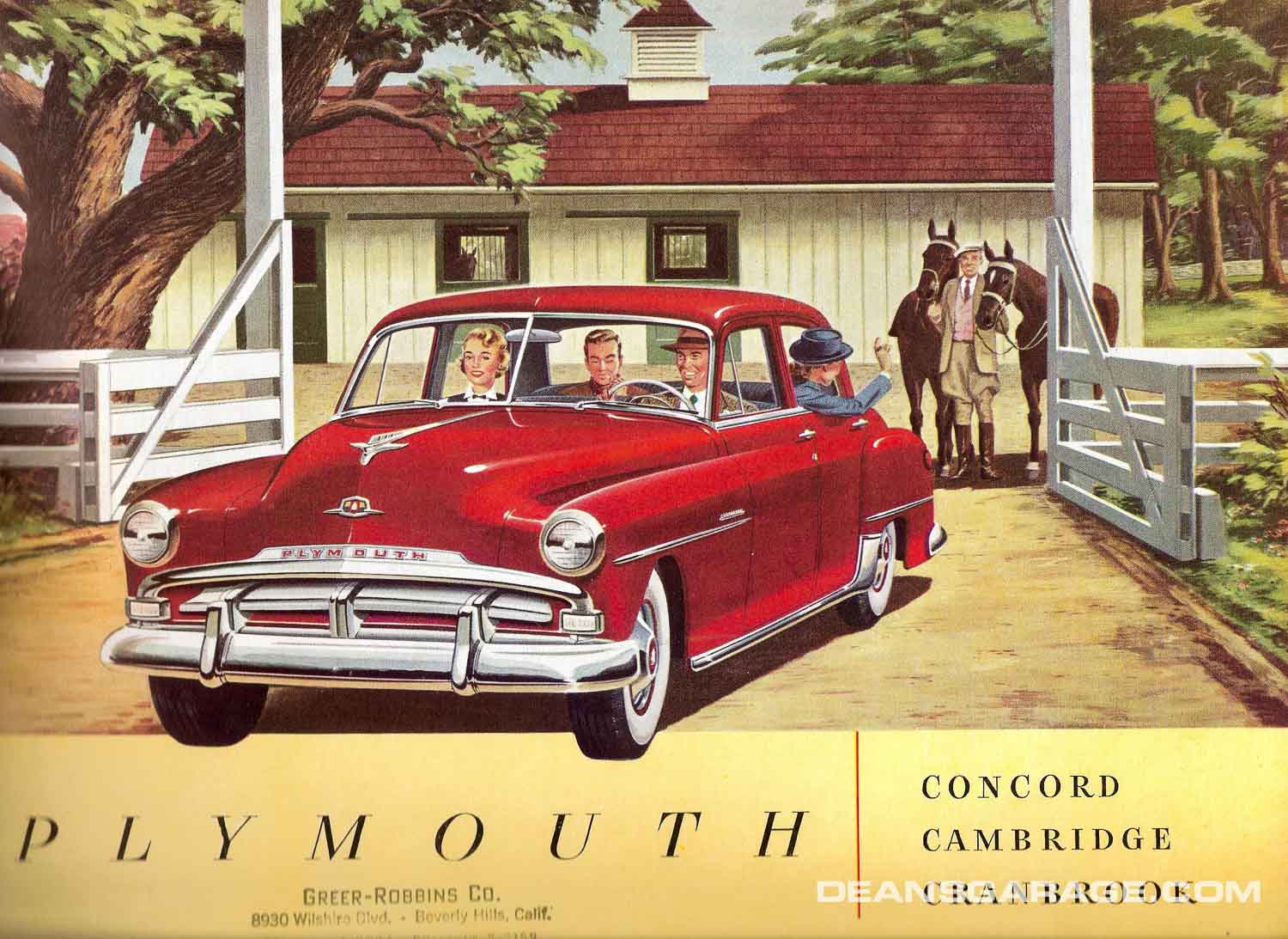
1951 Plymouth Cambridge
Another gray Plymouth, this time a 1951 Cambridge four-door sedan. This is the only Plymouth I remember him buying that was not a top-of-the-line model and I think my father regretted not having the little extras of the more deluxe Cranbrook series. You can tell that 1951 was not a big year for Plymouth when the brochure brags about the “Smartly styled dome light.” Maybe I wasn’t paying attention, but I spent a lot of time in the back seat and I never noticed anything special about the dome light.
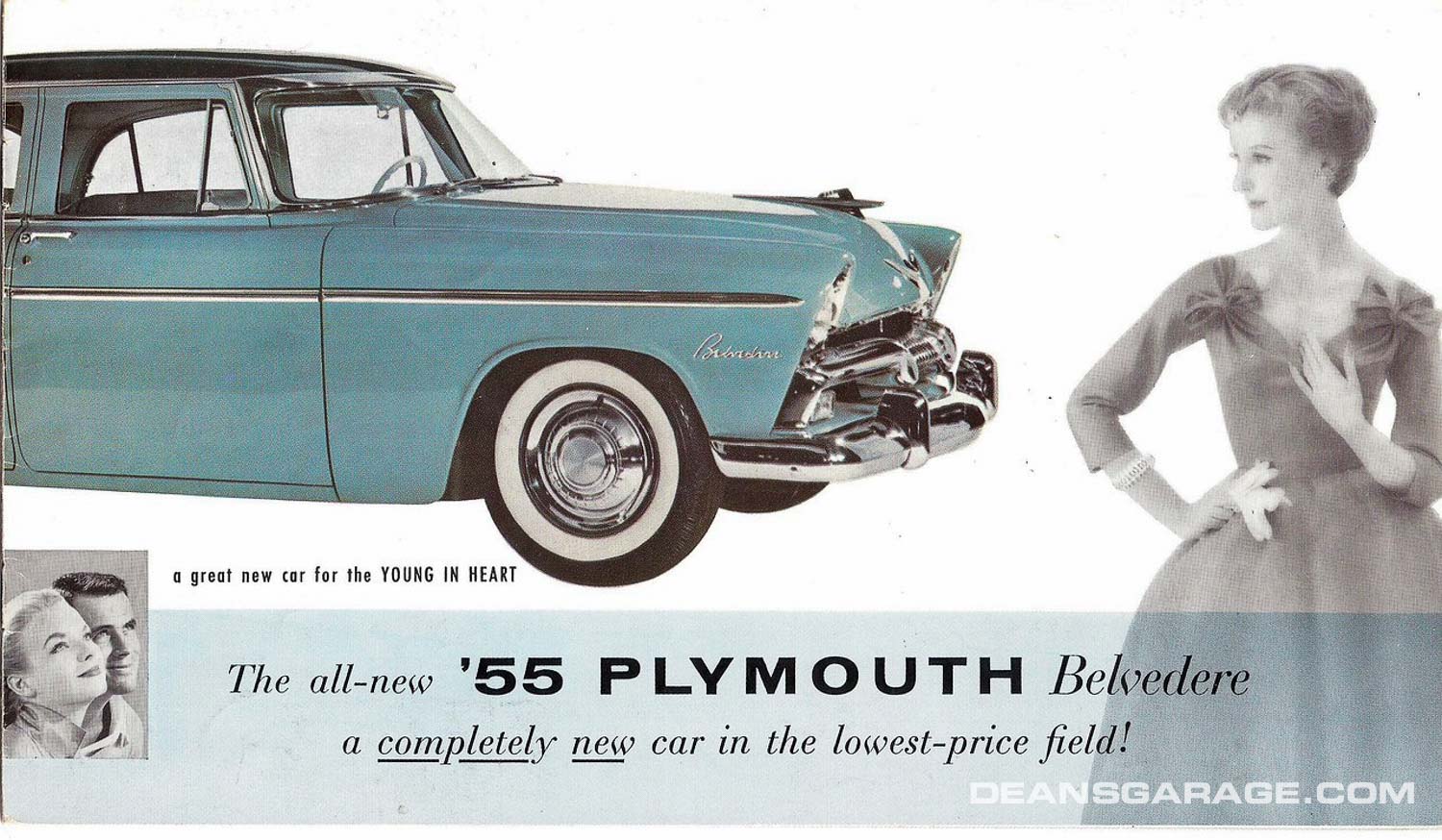
1955 Plymouth Belvedere
This time, my father went back to the top-of-the-line Plymouth and I think he let his inner car guy go wild. He sprung for a turquoise and off-white Plymouth Belvedere four-door sedan with automatic transmission in which the shift lever protruded from the dash (it was the year before Chrysler’s pushbutton transmission) and Plymouth’s first V8 engine. Not only was it two-tone paint, but he opted for the special paint job with the secondary color on portions of the sides in addition to the roof. No more plain gray, six-cylinder, manual shift cars for him!

1960 Chrysler Windsor
This was another break-through year! My father took a big jump up the price ladder when his favorite car salesman did a deal to put him in a new light blue 1960 Chrysler Windsor four-door sedan with a 318 cu. in V8, pushbutton automatic transmission, huge fins, power steering, power brakes, and a ‘Golden Tone’ radio. I think my father took the brochure’s mantra—“The car of your life for the time of your life”—seriously. I don’t know about that, but it was the perfect car for summertime cruisin’ after high school graduation and before getting serious and buckling down to college work. (Ask me how I know).
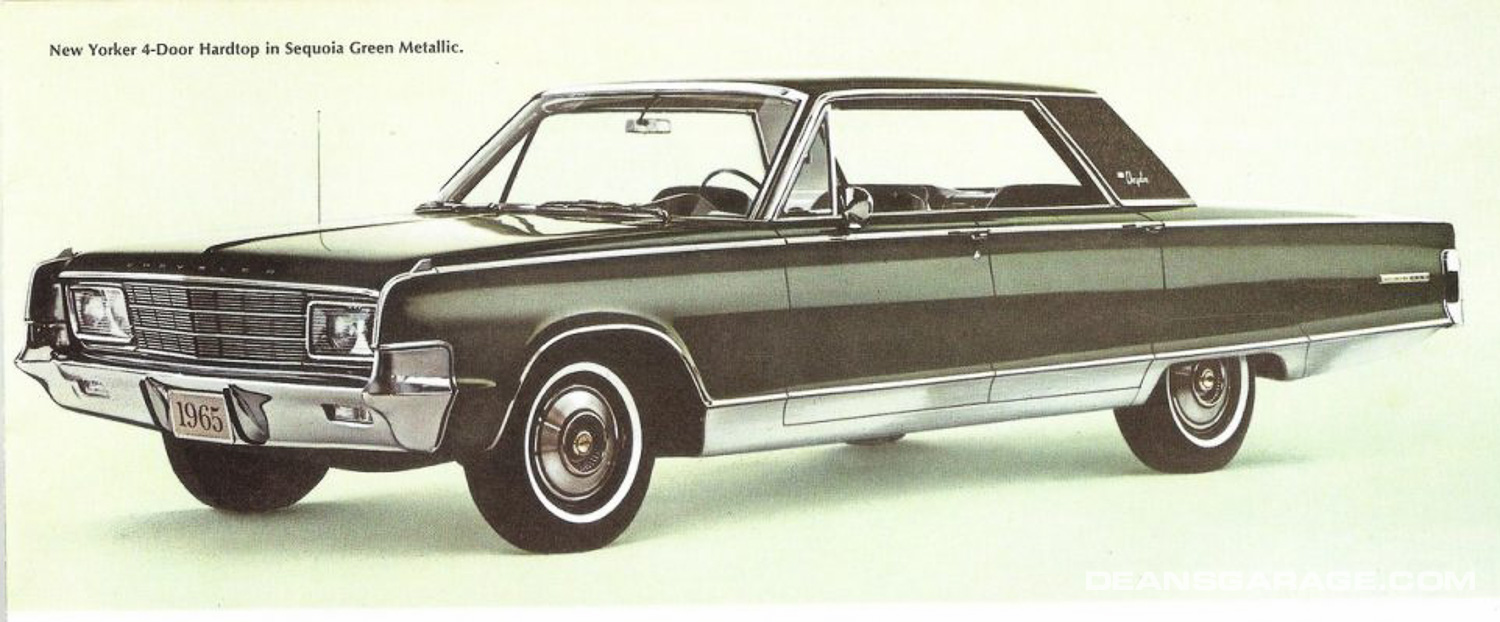
1965 Chrysler New Yorker
My father broke through the final frontier with this one. He bought a top-line New Yorker four-door hardtop model with automatic transmission and power-assisted everything, and it had air conditioning—no more sweltering summers! The Chrysler brochure tells us that: “Chrysler’s new luxury is many tangible things.” In what is a clear case of design overkill, these “tangible things” included a choice of five different roof styles. Nowhere does the brochure explain why one needs a choice of five different roof styles.
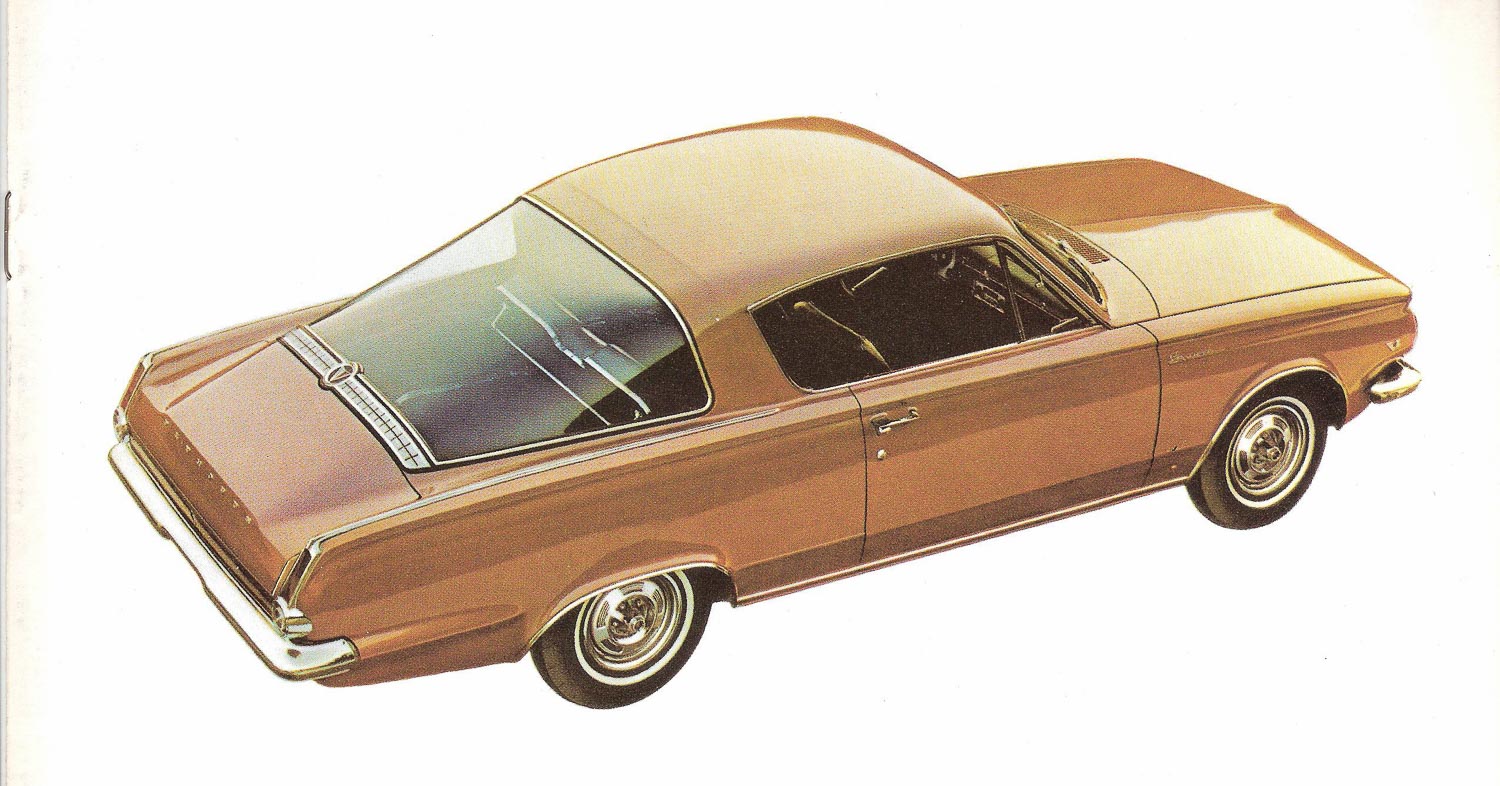
1965 Plymouth Barracuda Fastback
During the time he owned the ’65 Chrysler, my father bought a used 1965 Plymouth Barracuda fastback for my mom to drive. The white with blue vinyl interior Barracuda had the Slant Six engine and automatic transmission. I think my mother enjoyed the freedom of having her own car, especially since it was so easy to drive. Unfortunately, she had a serious accident with the car smashing up the front end and breaking her jaw in the process. Her jaw healed fine and my dad had the car repaired, but she never drove it again.
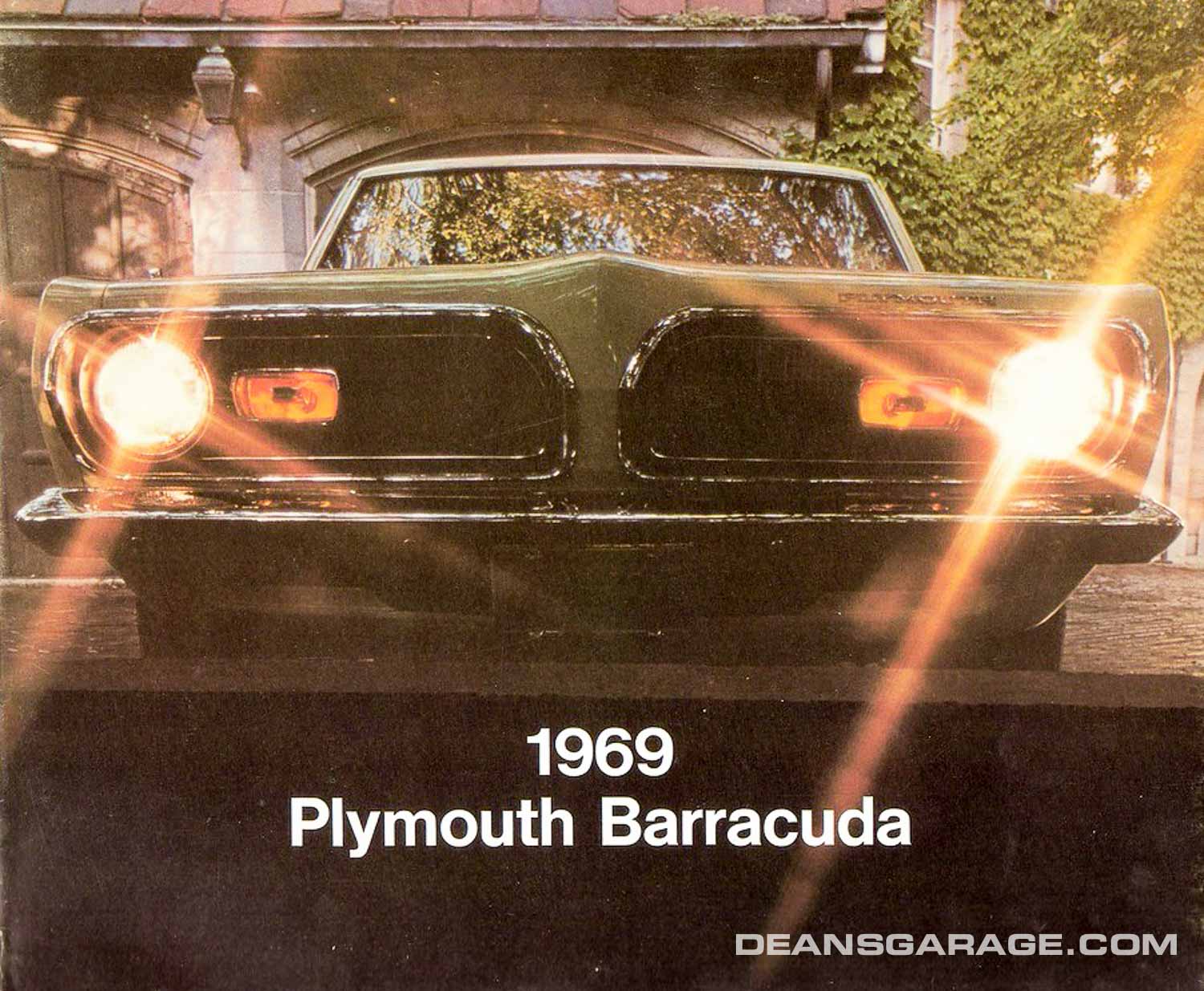
1969 Plymouth Barracuda Fastback
Thinking my mother’s not driving was a reluctance to drive the car in which she had the accident, the ’65 Barracuda was given to me and my father bought a used 1969 Barracuda fastback for her to drive. It was an odd choice for her even though it had automatic transmission and air conditioning. The car didn’t have power steering or power brakes and with a heavy V8 engine, it took a lot of muscle to drive. She decided she didn’t want to drive anymore and my father wound up using the Barracuda. I think he liked the power and it probably satisfied whatever performance car guy urges he had.
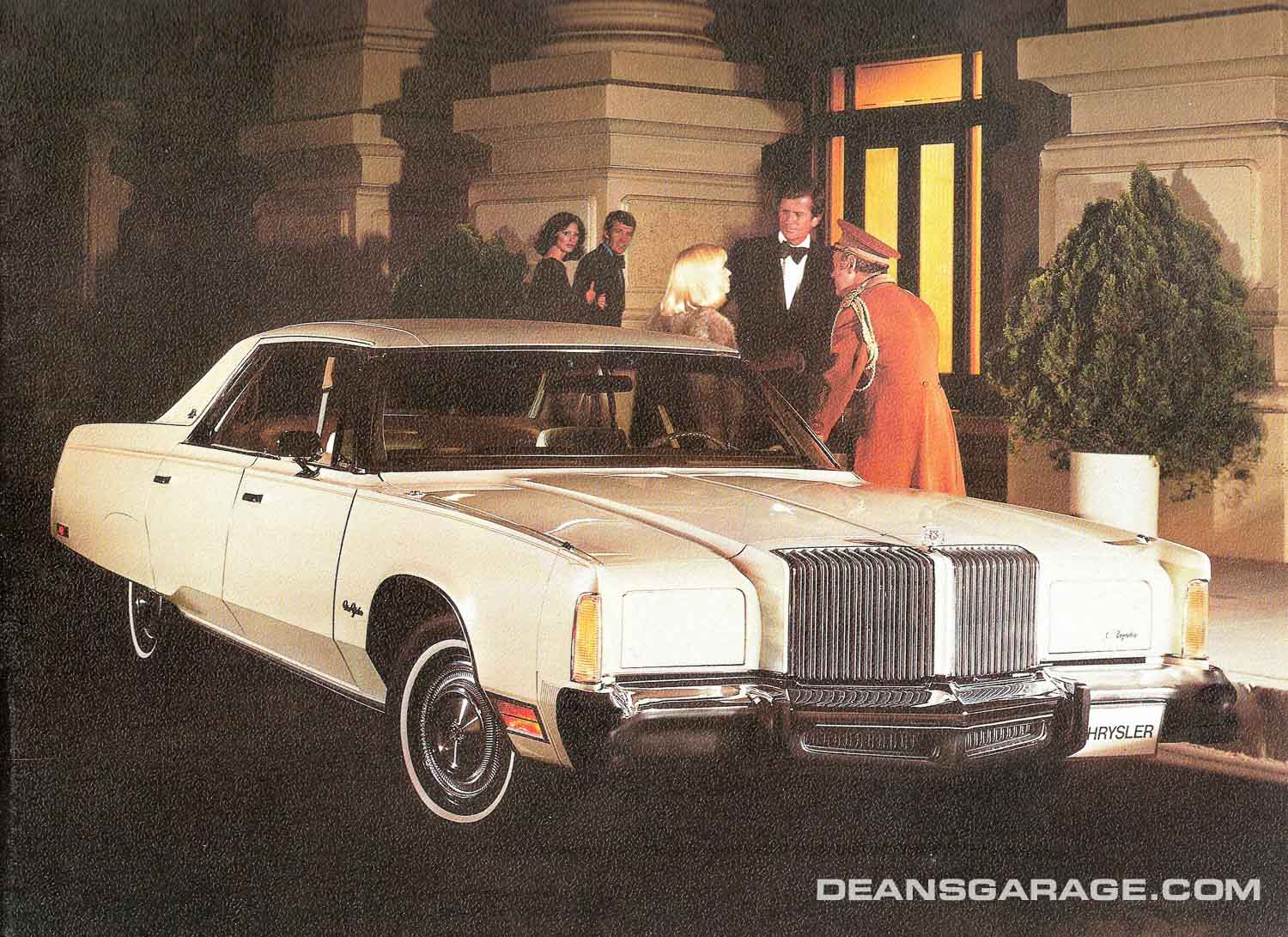
1977 Chrysler New Yorker
At some point in his life, a car guy will inevitably say, “This will be my last car and by golly I’m going to get the car I always dreamed about.” Well, his 1977 Chrysler New Yorker was that car for my father. He got the biggest car Chrysler made—the New Yorker then used the same body as the Imperial—with every option known to mankind except the power sunroof. It was white with a white vinyl top and a blue leather interior. And it was huge. It was longer than a current Chevy Suburban and almost as wide. Now my father was a little guy—about 5’ 7” tall and probably never weighed more than 150 pounds in his life—and the sight of this little old man behind the wheel of this gigantic automobile made everyone smile. As Alfred Sloan had imagined, I think this car was my father’s way of letting everyone know he had overcome the hard times and had arrived at the top of the ladder. And it was indeed the last car he ever bought.
Car Guy Tale #2 – Lester’s DeSoto Speedometer
Another of my father’s model airplane/car guy buddies was Lester. At this time, Lester had a late forties DeSoto with a ‘Safety Signal’ speedometer in which the numbers and the needle changed colors according to the speed – green up to 40 mph, amber to 50 mph, and red at higher speeds. Well, I couldn’t pass up an opportunity to see first-hand the latest in high-tech automotive technology and assumed my position in the back the next time my father and Lester went somewhere. My father brought up the speedometer in their conversation and Lester changed speeds to show me how it worked. Initially it was green and, sure enough, all the numbers and the needle turned amber as he exceeded 40 mph. Lester, being a law-abiding citizen and devout church-goer, declined to go above 50 so I could not verify that it changed to red. But, since Lester was a known car guy, I took his word for it.
Pop-Pop and Grandchildren
When my children came along, my father, Pop-Pop to them, found a new generation to teach the joys of driving. If he was out with his riding mower when we visited, he would let each sit in front of him and steer as he worked the throttle. His teaching continued even after they received their driver’s licenses, only this time with his full-size cars. He had the ’69 Barracuda and the ’77 Chrysler at the time, which my kids drove with my father riding shotgun. Being new drivers with no practical experience in cars of that era, the drives were eye openers for them. My daughter Holly drove the Barracuda when she was about 19 or 20 and, as she tells the story:
“The two things I remember most about driving the Barracuda are the lack of power steering and brakes and how difficult it was to drive it because of that, and the power it had when you pressed on the gas. Pop-Pop and I were out driving it one day and he told me to punch it. We were out on those [rural] roads so there weren’t many people out there. I was very surprised by the power of the car and how it took off. The sound of those older cars is just neat compared to the quietness of today’s engines.”
My son Brian also drove the Barracuda and he agreed with the difficulty of driving it because of the lack of power assists. He also had the unenviable task of driving the ’77 Chrysler. Brian and Pop-Pop had gone on an errand and my father let him drive home. Unfortunately, to get home they had to cross the Burlington-Bristol Bridge, a narrow, two-lane bridge across the Delaware River built in the 1920s. As Brian tells it:
“The Chrysler was extremely intimidating, because it was so darn big! It went on forever in every direction and I had no feel for where the edges of the car were. I was afraid I was going to hit everything. Driving over the Burlington-Bristol Bridge was a very rough time, because I had a slightly irrational fear of bridges anyway, and all I could think about was barreling this gigantic machine over the edge. I honestly never wanted to drive that thing again.
So much for a third generation of car guys.
Car Guy Tale #3 – Lester’s ’38 Plymouth Pickup
My all-time favorite coolest vehicle ever was Lester’s 1938 Plymouth pickup truck. His father used the truck in his carpentry business, and Lester inherited the truck when his father passed away. Lester’s father always kept the truck garaged when not in use and it was in great condition. One time Lester bought a small lathe and asked my father to help him go pick it up. Knowing that they would use the pickup I, of course, volunteered to help. Our expedition was set for Saturday morning and Friday night was like Christmas Eve for me – sleep was hard to come by. Right on time, Lester and the truck showed up and, once I managed to position my legs to avoid the gear shift lever and the emergency brake, I settled into the center position on the bench seat and we were off. When you’re a ‘future car guy’, life doesn’t get any better than spending a Saturday morning in an old Plymouth pickup truck sitting between your father and another car guy.
Epilogue
My father died in October of 2008 shortly after his ninety-seventh birthday. At the time, he still owned the ’69 Barracuda and the ’77 Chrysler. We gave the Barracuda to my daughter Holly and her family, and the Chrysler went to the mechanic at a local Chrysler dealer who my father befriended during the time he serviced my father’s car.
The car brochure album I now have in my home office. I find it is the key to unlocking my memory banks whenever thoughts of Barracudas, Chryslers, or old cars roll around.
About Bruce Troxel
“There’s no shortage today of enthusiast automotive writers and bloggers. Bruce Troxell, however, is unique. He writes with an understanding of what truly makes cars and car people tick. Bruce is a storyteller, not just a writer. Once you start reading his lead, you can’t stop.”—Martyn Schorr – Editor, CarGuyChronicles.com
Bruce Troxell is a professional freelance writer who has been contributing articles on aviation and automotive topics to a variety of websites and print publications since 2009. Following careers as an engineer with a major automobile manufacturer and as a lawyer in private practice, Mr. Troxell discovered the joys of writing and has never looked back. He brings a unique perspective and an engaging conversational style to all his writings.
An avid sports car fan since he saw his first professional race at Watkins Glen, New York, Bruce’s car interests have blossomed to include vintage cars, restomods, hot rods, and custom cars. He has participated in numerous vintage car rallies and is a concours veteran.
Born and raised in New Jersey, he and his wife Cindy now live in bucolic central Virginia with Max, a prescient stray cat who wandered into their lives several years ago and decided to stay.

Those were the days of easy rides and family time together…
A very nice recollection, which reminded me of my dad’s 59 Plymouth (he hated it) and 78 New Yorker (he really liked that). Also the neighbor’s 65 Barracuda I lusted after at age 9.
Thanks.
I’m from a third-generation car-guy family; Granpa George was one of the premiere body-and-fender (remember that phrase?) men in the Hudson Valley; my Dad learned to paint in his shop; and I worked “the line” for two-and-a-half years at GM Assembly in Tarrytown NY. In five decades of car ownership, Dad had about 15 cars, everything from a ’49 Pontiac he got for $35 from our local Gulf station owner to a Cadillac XLR, his last car, with five Corvettes in the mix along with a ’76 Eldorado Biarritz, a Tri-power 4-speed ’64 Bonneville convertible and a WS6 Trans-Am Firebird. As was said, “He always liked a good car”. Great car-guy story, Bruce.
What a wonderful series of recollections that show how a family’s love and respect for one another were and are tied into the cars they drove.
Great article, Bruce! My dad was also a car guy and I love this idea of remembering a loved one through the vehicles they owned over the years.